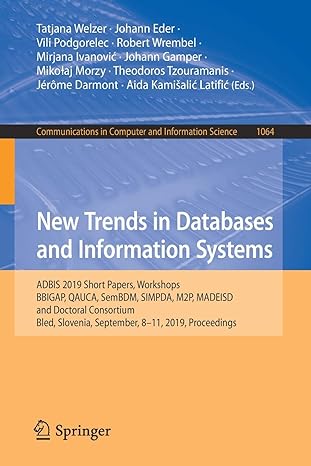Question
1. Why do we use 5 bits in the table in part II (the number of students attending the lab)? Can we use only 4-bits
1. Why do we use 5 bits in the table in part II (the number of students attending the lab)? Can we use only 4-bits instead?
2. How many different values can be represented by 6 bits?
3. There are 194 students registered in CSc 230, what is the minimum number of bits needed to represent this number in binary (assume it is an unsigned number)?
4. Convert the following positive integer numbers: a. 0b1001101 to decimal b. 261 to binary c. 153 to hexadecimal d. 0x1FE to decimal
5. Convert the following numbers using 2s complement notation: a. -63 to binary b. -123 to hexadecimal c. 0b101011 to decimal d. 0b001110 to decimal
6. What are the minimum and maximum values (in decimal) represented by a 4-bit binary number: a) as an unsigned number? b) as a signed number (2s complement)? How about 8 bits, 16 bits? Can you come up with an equation for any number of bits, lets say k? For example, given a 2-bit number, the answer is: Number of bits Unsigned Signed 2 [0, 3] [-2,1]
7. What is the result of bitwise AND operation on 0b10110010 with 0b11110000?
8. What is the result of bitwise XOR operation on 0b11000101 with 0b11110000?
9. What is the result of the logical left-shift operation on 0b01011101? How about right-shift?
10. Recall that the position of each bit in a binary number is associated with its power; for example, in one byte, the positions are 27 26 25 24 23 22 21 20 . What is the 8-bit binary number x (also called a mask) to be used if we want to clear the bits at positions 2, 3, 5, and 7 in a given byte?
Step by Step Solution
There are 3 Steps involved in it
Step: 1

Get Instant Access to Expert-Tailored Solutions
See step-by-step solutions with expert insights and AI powered tools for academic success
Step: 2

Step: 3

Ace Your Homework with AI
Get the answers you need in no time with our AI-driven, step-by-step assistance
Get Started


